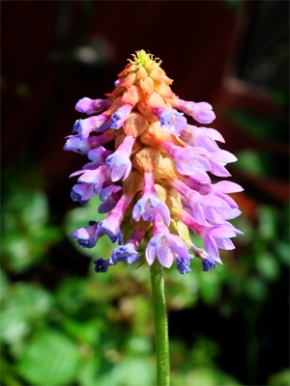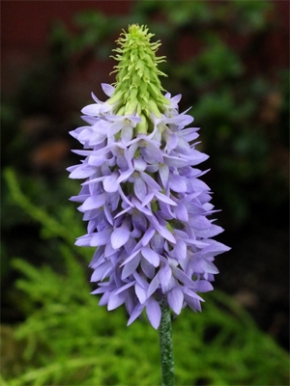Primula bulleyana is a species of flowering plant in the family Primulaceae, native to hillsides in China.

Primula bulleyana is one of a group known as candelabra primulas, so called because of the tiered arrangement of their flowers. It is a semi-evergreen perennial. The sturdy, erect flowering stems appear in summer and are 50–60 cm [20–24 in] long, rising in groups from a rosette of leaves 12–35 cm [5–14 in] long and 3–10 cm [1–4 in] broad. The whorls of multiple orange-yellow flowers, opening from red buds, are arranged in tiers.
Photos: Flower Dome, Gardens by the Bay, Singapore [20150301]
Source: Wikipedia







